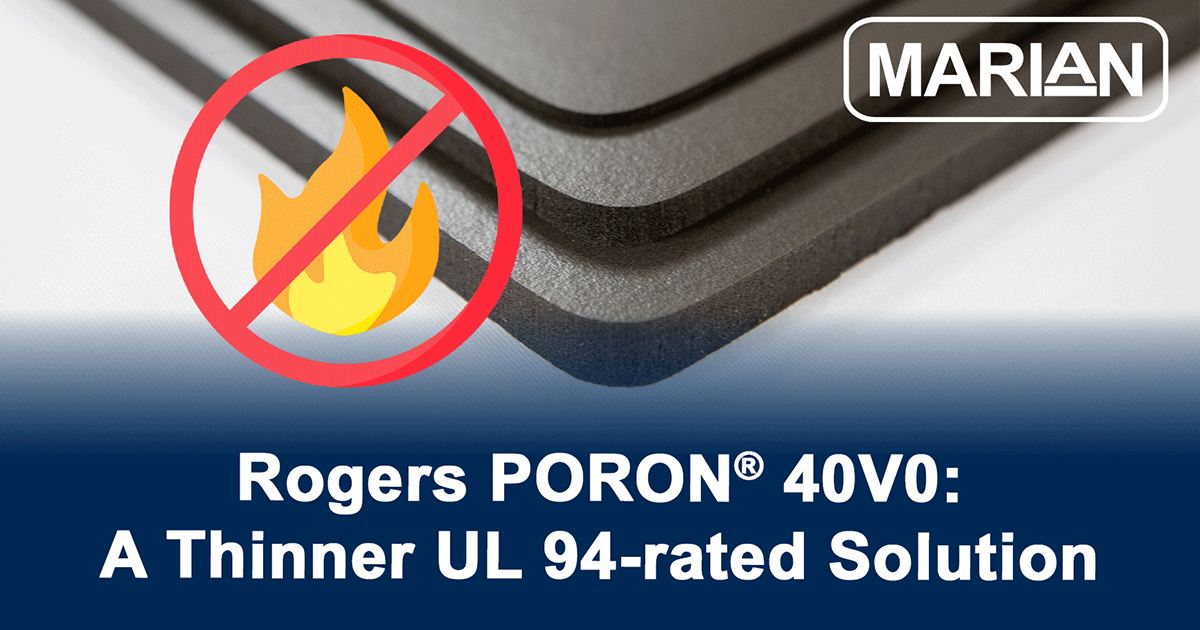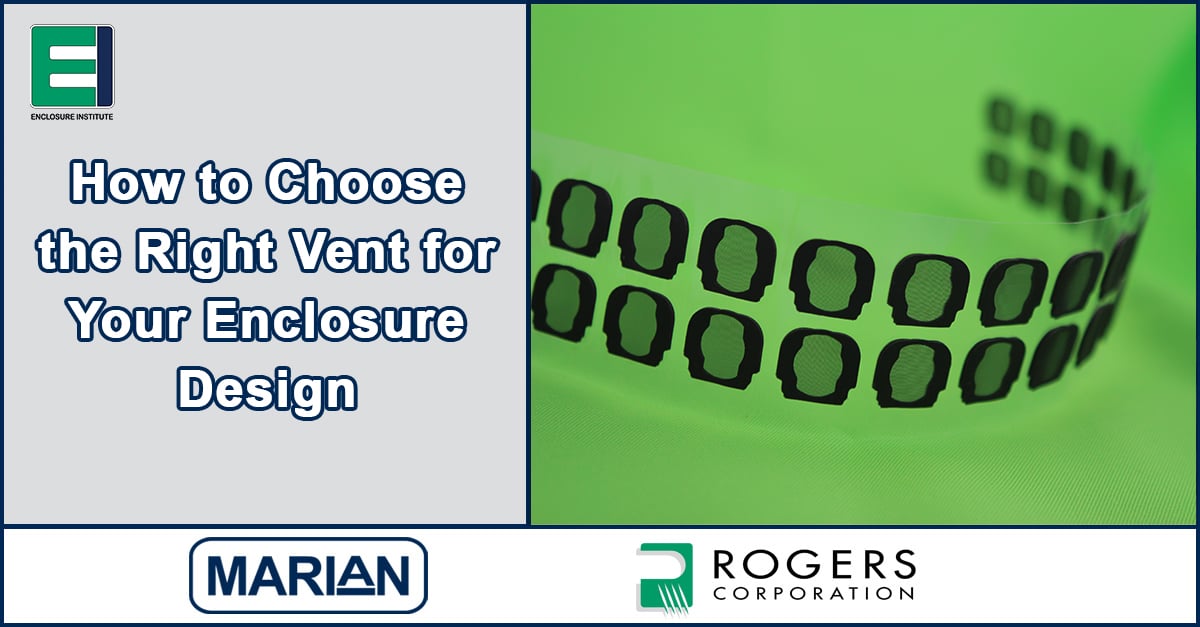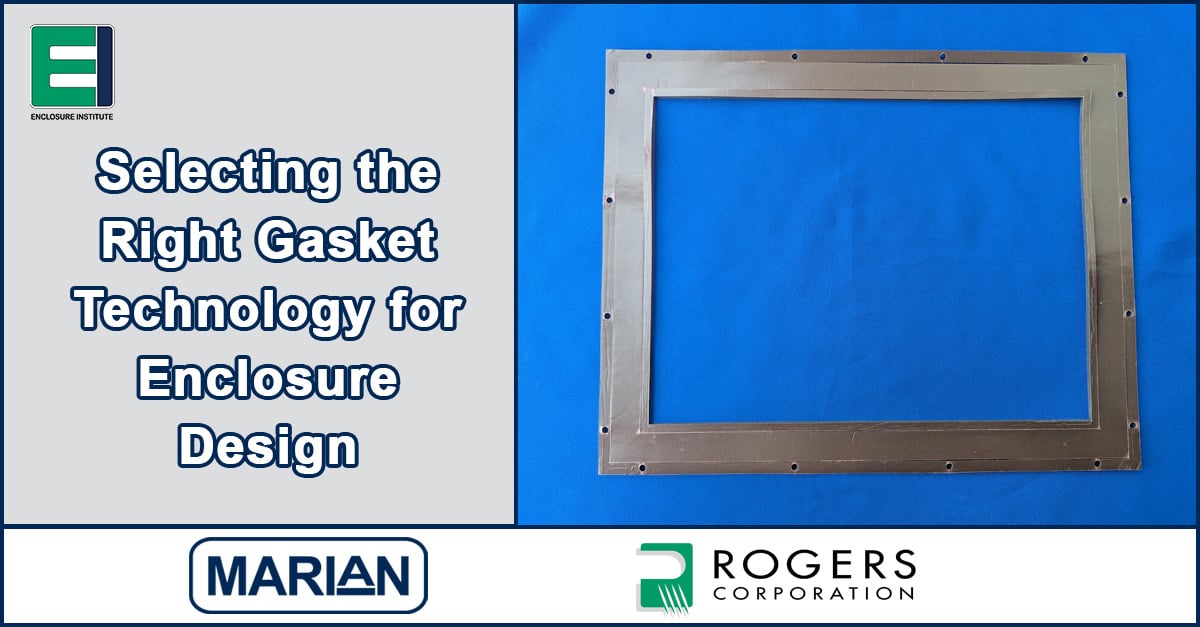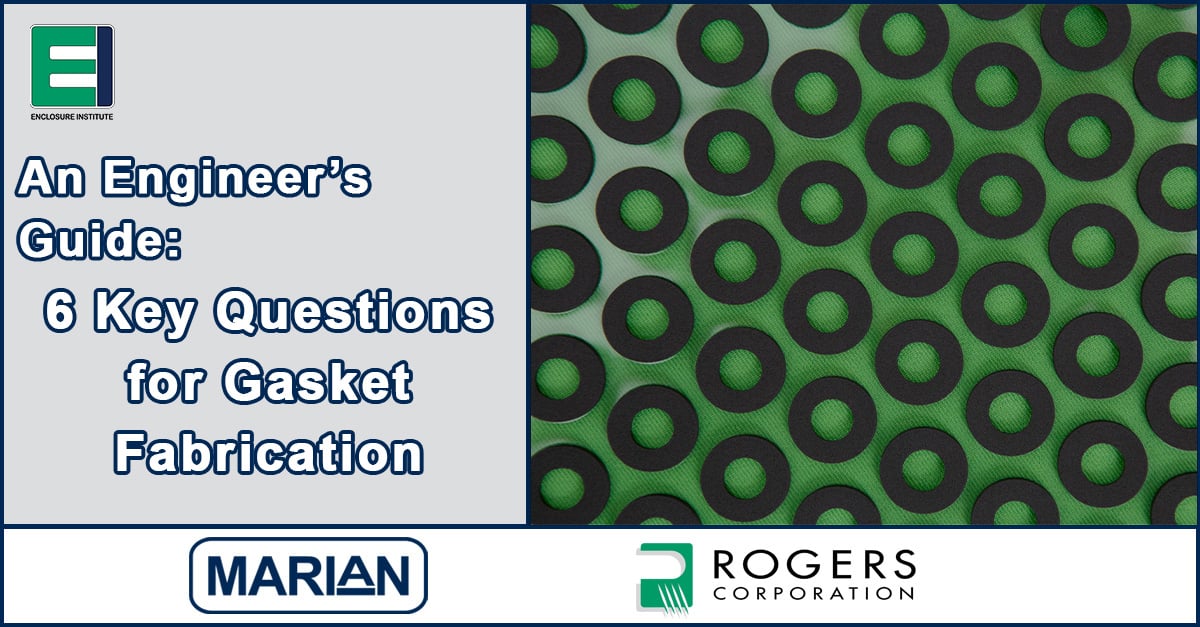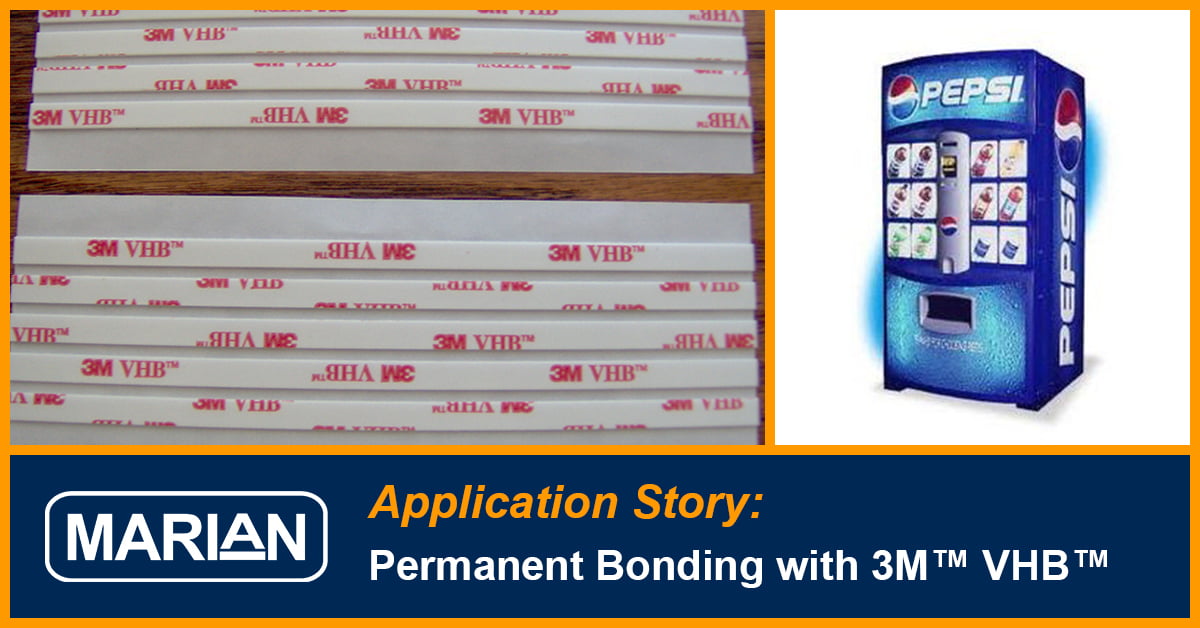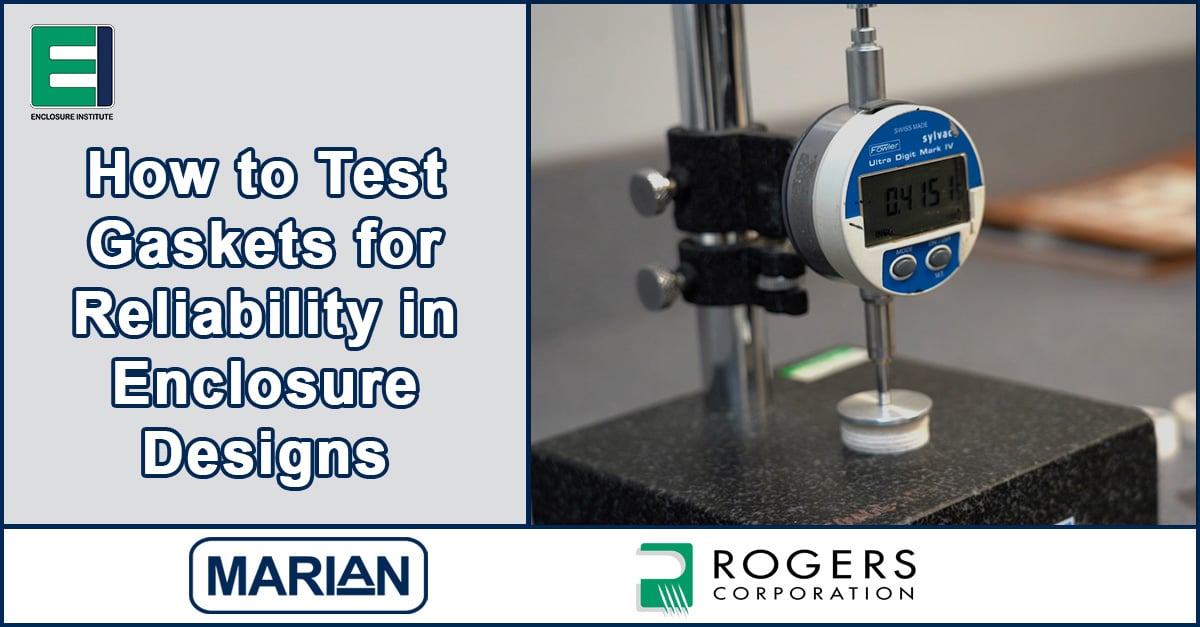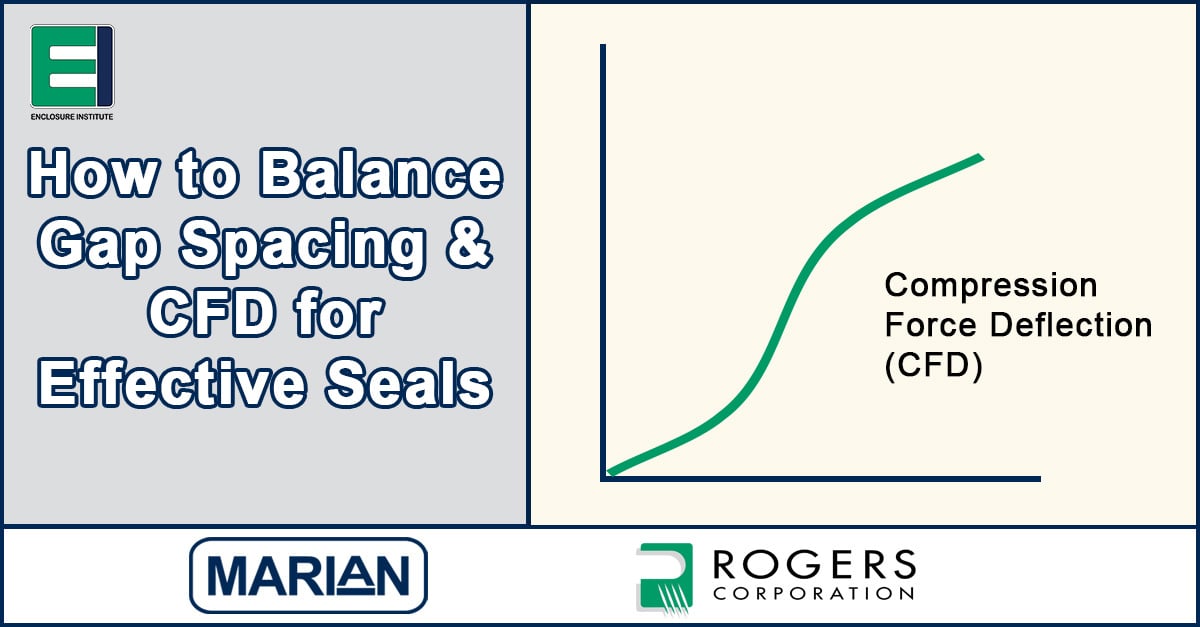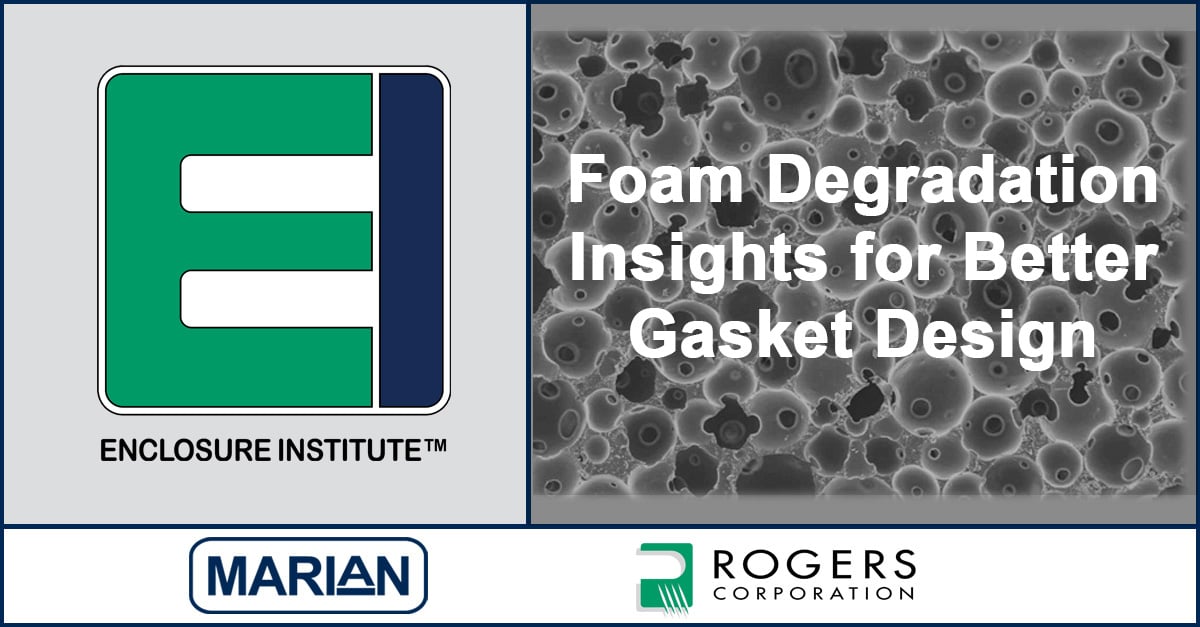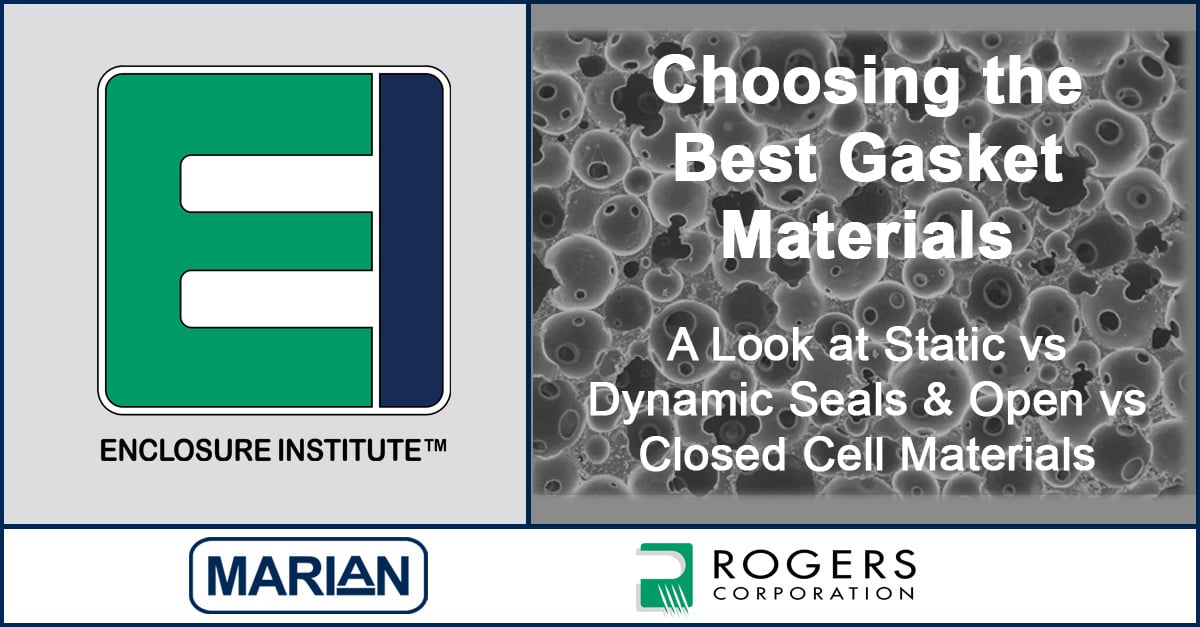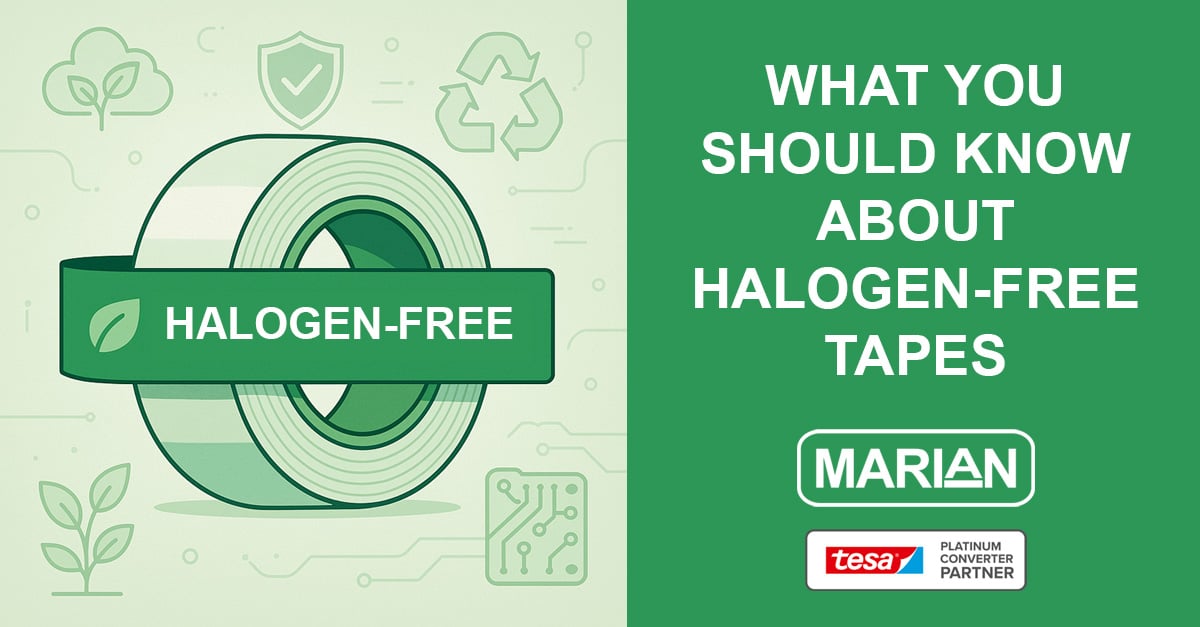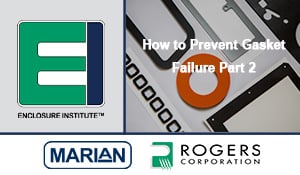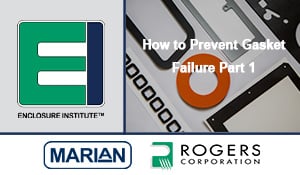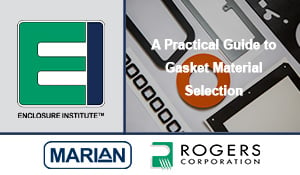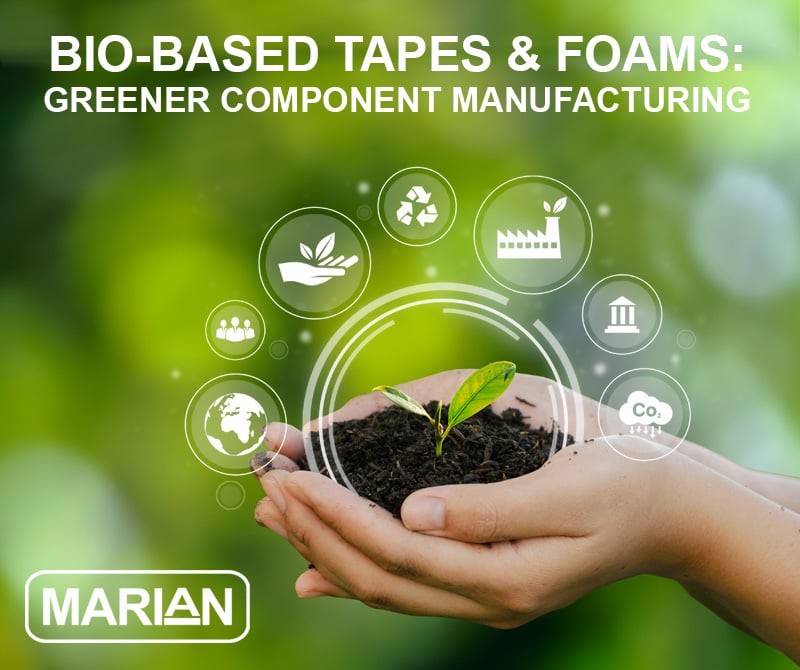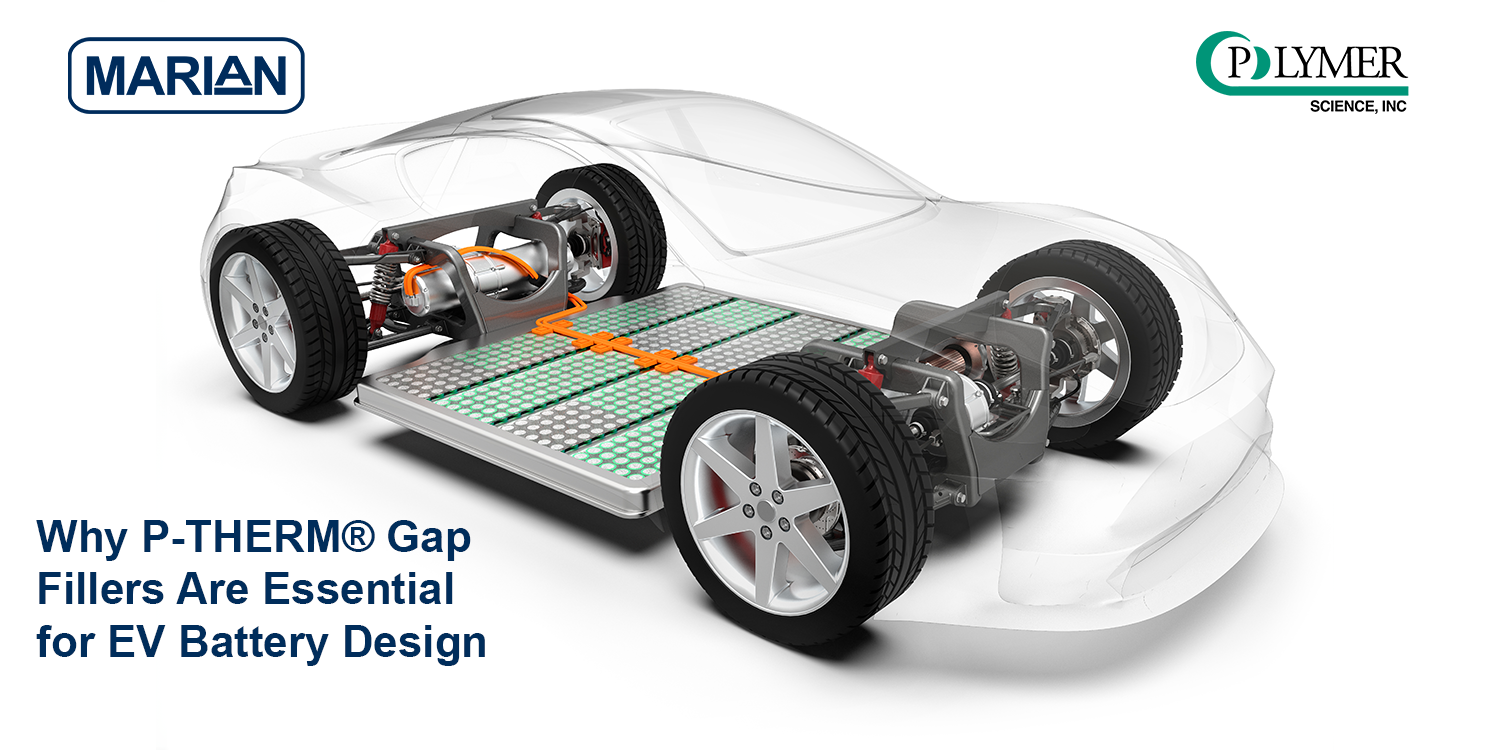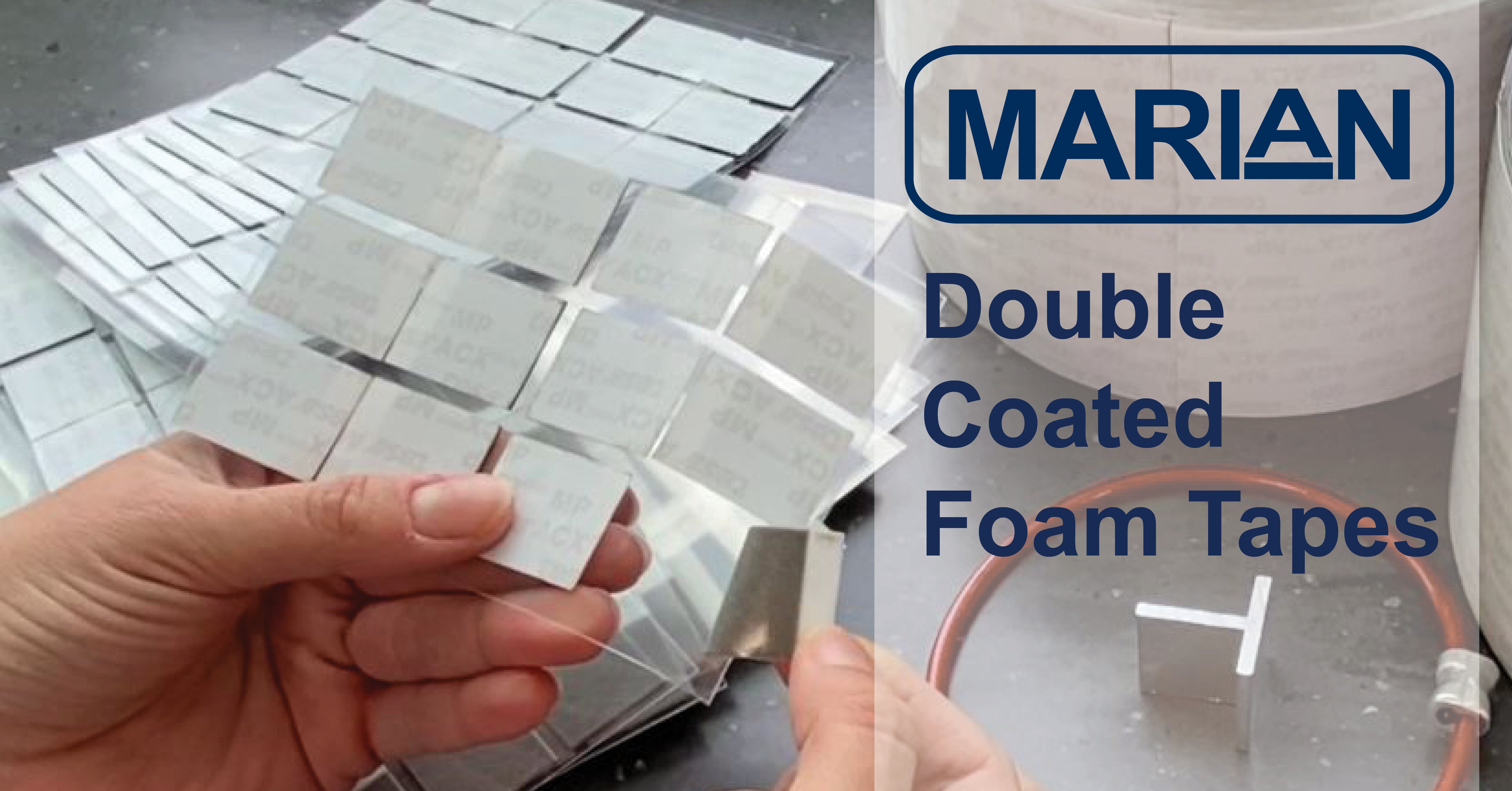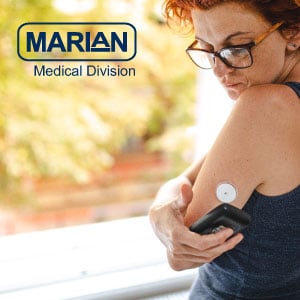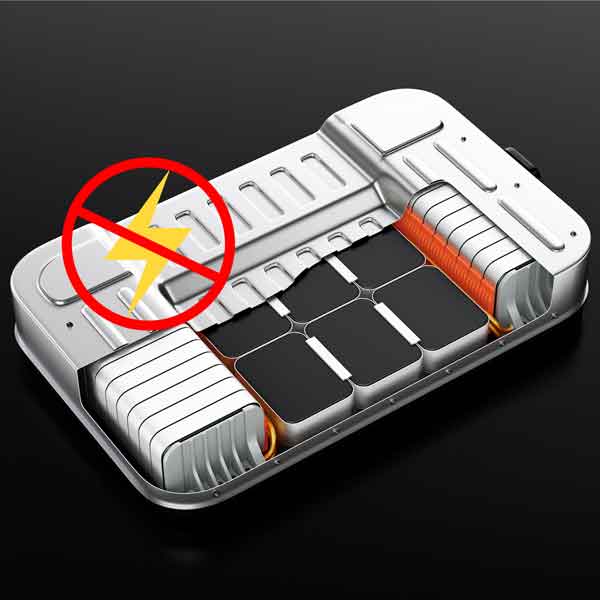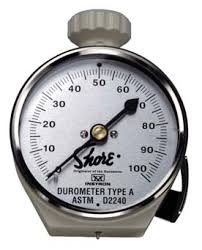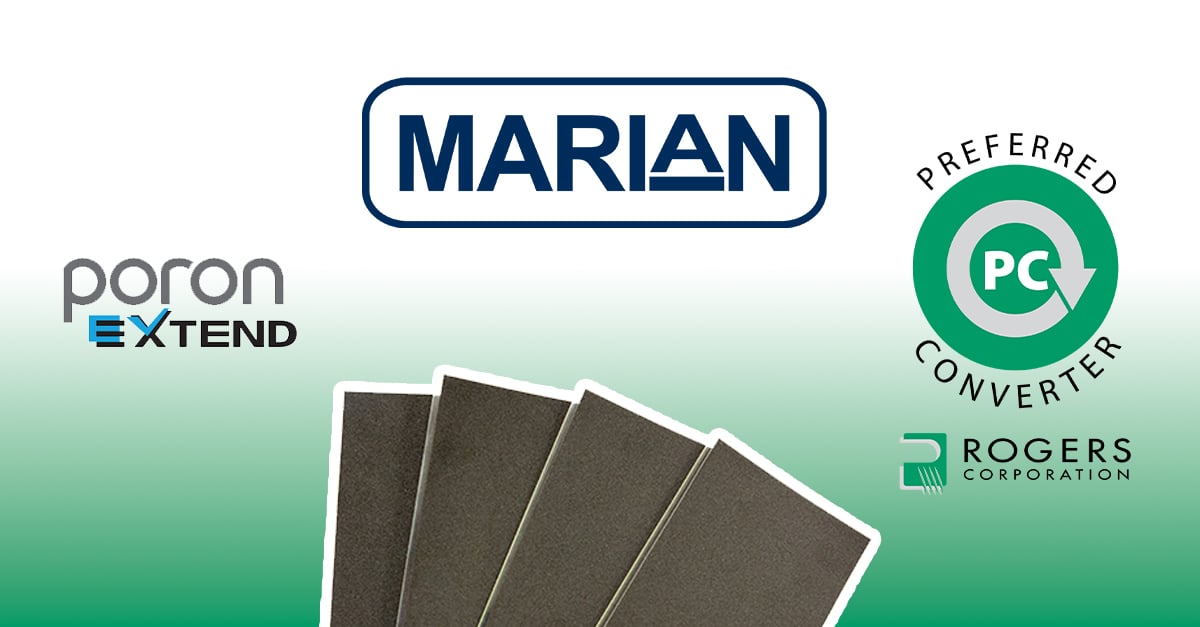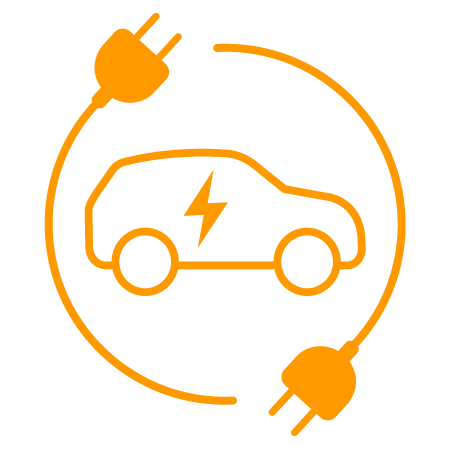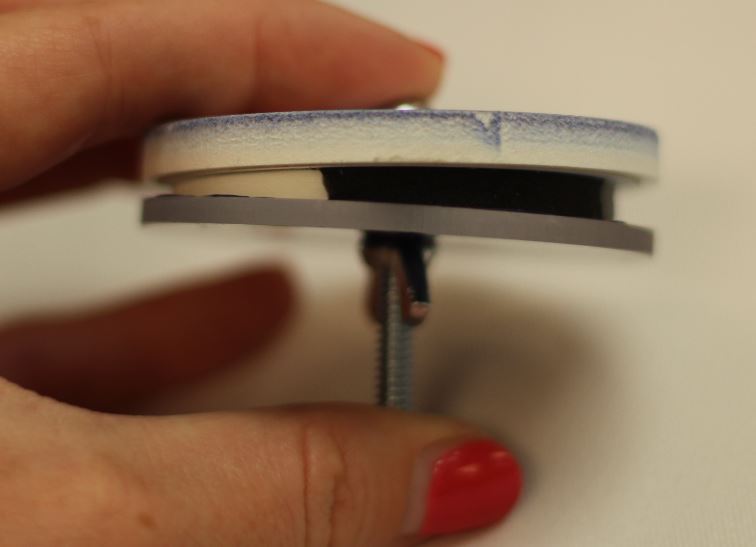The Application Challenge
One of the many markets Marian converts custom components for is the LED industry. For over a decade, customers have turned to LED lighting as an environmentally friendly solution with a longer service life than conventional lighting.
Keep reading to learn more about a customer that removed conventional bulbs from existing lighting structures and retrofit them with LEDs and see how Marian helped them come up with a custom die-cut solution to improve their assembly process.
Read More
Topics:
Thermal Management,
Manufacturing,
Material selection,
Die Cutting,
Application Story,
Thermal Pad,
Assembly,
Converting
Rogers Corporation’s PORON® 40V0 foam gives engineers a thinner, softer, and UL 94 compliant solution for gap filling and cushioning.
Unlike standard polyurethane foams, PORON 40V0 combines reliable flame resistance with enhanced compressibility in slimmer grades, making it ideal for space-constrained designs. It also meets strict environmental standards and minimizes contamination risks in critical applications.
Read More
Topics:
Thermal Management,
Foams,
Manufacturing,
PORON,
EV,
Battery,
Material selection,
Flame Barrier,
Automotive,
Sustainable Materials,
Rogers Corporation,
Data Center
As industries evolve toward smarter, smaller, and more connected technologies, enclosures are facing new challenges. Design engineers are under pressure to deliver lighter, thinner, and safer enclosures that protect sensitive electronics from harsh environments while still meeting demanding performance standards.
This shift is transforming how gaskets and seals are designed and what materials are being used across key markets such as electric vehicles (EVs), medical devices, energy storage systems (ESS), and data centers.
Check out the extended blog on the Rogers website, The Future of Sealing: How Tomorrow's Applications Are Changing, and the video below to see where enclosures are heading and what will be necessary by the teams designing these enclosures.
*Disclaimer: The Enclosure Institute™ is a free educational resource created by Marian, Inc. and Rogers Corporation to help engineers navigate enclosure sealing with expert guidance.
Read More
Topics:
Manufacturing,
PORON,
Vent Material,
Material selection,
Die Cutting,
Automated Assembly,
PTFE Membrane,
Gasket,
Assembly,
Enclosure Institute,
Seals,
Enclosures,
Rogers Corporation,
ePTFE
Effective venting is one of the most important yet overlooked aspects of enclosure design. Whether protecting sensitive electronics, automotive components, or sensor systems, proper venting ensures reliability, safety, and long-term performance. By understanding the role of a vent, how venting solution works, why they're necessary, and how to choose the right materials and designs, engineers can create enclosures that maintain functionality even in harsh environments.
Check out the extended blog on the Rogers website, How To Design Effective Enclosure Vents: Balancing Pressure, Moisture, and Protection, and the video below.
*Disclaimer: The Enclosure Institute™ is a free educational resource created by Marian, Inc. and Rogers Corporation to help engineers navigate enclosure sealing with expert guidance.
Read More
Topics:
Manufacturing,
PORON,
Vent Material,
Material selection,
Die Cutting,
Automated Assembly,
PTFE Membrane,
Gasket,
Assembly,
Enclosure Institute,
Seals,
Enclosures,
Rogers Corporation,
ePTFE
Gaskets and seals can be manufactured in a number of different ways, but which is the best form for your application? In our blog, "An Engineer's Guide: 6 Key Questions for Gasket Fabrication", we discussed a number of different processes that could be used to cut your custom gasket or seal like rotary die cutting, laser cutting, waterjet cutting, and more.
This Enclosure Institute™ content from Marian and Rogers Corporation focuses on the difference between die-cut foam gaskets and three other sealing methods: o-rings, cure-in-place (CIP), and foam-in-place (FIP) gaskets.
Check out a summary of our content below or read the full article on Rogers’ website.
Enroll in The Enclosure Institute™ to advance your sealing design expertise.
*Disclaimer: The Enclosure Institute™ is a free educational resource created by Marian, Inc. and Rogers Corporation to help engineers navigate enclosure sealing with expert guidance.
Read More
Topics:
Foams,
Manufacturing,
BISCO Silicone,
PORON,
Material selection,
Die Cutting,
Automated Assembly,
Gasket,
Assembly,
Enclosure Institute,
Seals,
Enclosures,
Rogers Corporation
Selecting the right fabrication process for custom seals and gaskets starts with answering a few critical design-for-manufacturing (DFM) questions. By addressing these factors upfront, design engineers can avoid costly redesigns, speed up production, and ensure that their parts meet application requirements. At Marian, our engineers use these questions (and more) to create a fabrication plan tailored to each project.
This guide is presented by the Enclosure Institute™. For a deeper dive, explore the extended blog on the Rogers website, Top 8 Best Practices You Need to Know for Enclosure Die-Cut Gaskets, along with the video below hosted by Marian's own Phil Taylor and Jimmy Budd.
In these resources, you'll learn how starting with the right gasket design can optimize geometry to balance sealing force, fasteners, and load distribution. You'll also see why selecting manufacturing methods that align with production scale is critical for efficiency. Assembly features such as pull-tabs, locating holes, and specialized adhesives help streamline installation and minimize errors. Finally, packaging and delivery strategies play an often-overlooked role in protecting gasket integrity while making assembly faster and more reliable.
*Disclaimer: The Enclosure Institute™ is a free educational resource created by Marian, Inc. and Rogers Corporation to help engineers navigate enclosure sealing with expert guidance.
Read More
Topics:
Foams,
Manufacturing,
BISCO Silicone,
PORON,
Material selection,
Die Cutting,
Automated Assembly,
Gasket,
Assembly,
Enclosure Institute,
Seals,
Enclosures,
Rogers Corporation
The Application Challenge
Marian's converting capabilities span across a very wide variety of industries. You may already know that we’re highly involved in the medical, battery, automotive, and consumer electronics industries (among many others), but you truly can find Marian parts all around you, even in the vending machines dispensing your favorite drinks and snacks.
Keep reading to learn more about a customer that manufactures and refurbishes beverage and vending machines and how they incorporated Marian custom die-cut components to improve the machines for a consistent user experience.
Read More
Topics:
Manufacturing,
Acrylic Foam Tape,
Material selection,
Die Cutting,
Application Story,
3M,
PSA,
Assembly,
Converting
A seal’s true value isn’t in how it looks on day one, but in whether it still protects your enclosure years later under heat, moisture, and mechanical stress. This Enclosure Institute™ article breaks down five core tests engineers can use to validate long-term gasket reliability: compression set, stress relaxation, thermal cycling, chemical resistance, and IP ingress protection.
Check out the extended blog on the Rogers website, How To Validate Enclosure Seal Reliability Through 5 Tests, and the video below.
*Disclaimer: The Enclosure Institute™ is a free educational resource created by Marian, Inc. and Rogers Corporation to help engineers navigate enclosure sealing with expert guidance.
Read More
Topics:
Foams,
IP Rating,
BISCO Silicone,
CFD,
PORON,
Compression Set,
Material selection,
Die Cutting,
Ingress Protection,
Gasket,
Enclosure Institute,
Seals,
Enclosures,
Rogers Corporation,
Material Testing
Designing a dependable enclosure seal isn’t just about picking or designing a gasket, it’s about how that gasket behaves under compression, for the planned life of the device (hours, weeks, months, days, years, etc.), within your hardware’s mechanical limits. The latest article from the Enclosure Institute™ highlights four key factors that matter most: gap spacing, compression force deflection (CFD), material compressibility, and gasket width.
Check out the extended blog on the Rogers website, The Mechanics of Enclosure Seal Design: Gap Spacing, CFD, and Compressibility, and the video below.
*Disclaimer: The Enclosure Institute™ is a free educational resource created by Marian, Inc. and Rogers Corporation to help engineers navigate enclosure sealing with expert guidance.
Read More
Topics:
Foams,
BISCO Silicone,
CFD,
PORON,
Material selection,
Die Cutting,
Gasket,
PSA,
Enclosure Institute,
Seals,
Enclosures,
Rogers Corporation
Understanding how different foams degrade is critical to designing gaskets that deliver optimal performance for their intended lifespan in any application. Learn what “long-term” reliability means in real-world environments and how polymer degradation mechanisms impact sealing materials.
In this Enclosure Institute™ blog, Marian and Rogers Corporation explore the key factors contributing to foam material degradation, providing engineers with insights to design durable components that maintain reliable performance throughout the product’s operational life.
Check out the extended blog on the Rogers website, Expert Tips for Preventing Polymer Degradation in Enclosure Applications, and the video below.
*Disclaimer: The Enclosure Institute™ is a free educational resource created by Marian, Inc. and Rogers Corporation to help engineers navigate enclosure sealing with expert guidance.
Read More
Topics:
Foams,
BISCO Silicone,
PORON,
Material selection,
Die Cutting,
Gasket,
PSA,
Enclosure Institute,
Seals,
Enclosures,
Rogers Corporation
Material selection related to seal performance is highly application specific. When choosing a sealing material, it's important to first understand if your application will be used in a static or dynamic environment. This ensures the appropriate materials are being considered for a gasket that maximizes enclosure reliability while also preventing premature failure.
In this Enclosure Institute™ blog, Marian and Rogers Corporation break down the differences between a static and dynamic seal, the design implications, and the key material properties that matter most.
Check out the blog on the Rogers website, Everything You Need to Know About Static vs Dynamic Seals in Enclosures, and the video below. The video also dives a little deeper into open cell and closed cell materials, their performance characteristics, and the various testing methods to verify those characteristics.
*Disclaimer: The Enclosure Institute™ is a free educational resource created by Marian, Inc. and Rogers Corporation to help engineers navigate enclosure sealing with expert guidance.
Read More
Topics:
Foams,
BISCO Silicone,
PORON,
Material selection,
Die Cutting,
Gasket,
PSA,
Enclosure Institute,
Seals,
Enclosures,
Rogers Corporation
Adhesive selection can be challenging, and it’s even more difficult in applications that generate heat like electronics, batteries, and more where the risk of fire is present. You can find many flame-retardant pressure sensitive adhesives on the market, but flame-retardant doesn’t necessarily mean halogen-free. So, if there are available options, why should you consider choosing a halogen-free tape?
Keep reading to see what classifies an adhesive as halogen-free, why you might consider a halogen-free tape in your next heat-generating application and learn more about some of the many halogen-free tapes available from tesa®.
Read More
Topics:
EV,
HEV,
Material selection,
PSA,
Converting,
Sustainable Materials,
Electronics,
Tesa
Not all sealing failures can be seen with the naked eye. Sometimes, subtle design oversights, improper installation, or even the application's environment if not planned for correctly can quietly undermine your enclosure’s performance.
There's a lot more than just material selection goes into designing a successful enclosure. In this case study, we highlight how Marian and Rogers Corporation teamed up to solve a moisture intrusion issue in a digital intercom system after the original gasket designed by a competitor allowed a leak to damage internal electrical components and, ultimately, caused the devices to fail.
The blog on the Rogers website, What Good Sealing with the Right Partner Looks Like, and the video below walk through how the Marian team recommended materials that effectively sealed the touchscreen modules and also prevented the leaks that previously caused failure.
Disclaimer: The Enclosure Institute™ is a free educational resource created by Marian, Inc. and Rogers Corporation to help engineers navigate enclosure sealing with expert guidance.
Read More
Topics:
Foams,
BISCO Silicone,
PORON,
Material selection,
Die Cutting,
Gasket,
PSA,
Enclosure Institute,
Seals,
Enclosures,
Rogers Corporation
While you might think pressure sensitive adhesives (PSAs) are pretty straightforward, selecting the wrong for your enclosure application can create problems and compromise sealing performance long before final assembly takes place.
Learn the key features of each adhesive type in latest blog on the Rogers website, How to Choose the Right PSA for Your Enclosure Components, and the video below to get an idea of which adhesives perform well in different situations. Once you have an understanding, you can start designing more reliable sealing components for your enclosure applications.
Disclaimer: The Enclosure Institute™ is a free educational resource created by Marian, Inc. and Rogers Corporation to help engineers navigate enclosure sealing with expert guidance.
Read More
Topics:
Foams,
BISCO Silicone,
PORON,
Material selection,
Die Cutting,
Gasket,
PSA,
Enclosure Institute,
Seals,
Enclosures,
Rogers Corporation
In Part 2 of our gasket failure series, we shift from the discussion on material science & environmental factors to mechanical design & real-world installation. Even a high-performance gasket can fail due to poor geometry, fastener placement, uneven compression, lack of venting, or improper gasket placement altogether.
Find the latest blog on the Rogers website, 6 Reasons Why Gaskets Fail: Design and Assembly, and the video below to start designing more reliable sealing components for your enclosure applications today.
Disclaimer: The Enclosure Institute™ is a free educational resource created by Marian, Inc. and Rogers Corporation to help engineers navigate enclosure sealing with expert guidance.
Read More
Topics:
Foams,
BISCO Silicone,
CFD,
PORON,
Compression Set,
Material selection,
Die Cutting,
Gasket,
Enclosure Institute,
Seals,
Enclosures,
Rogers Corporation,
Kiss-Cut,
Collapsible Gasket,
Multi-Piece Gasket,
Puzzle Gasket
Even the best-sealed enclosure can fail if the gasket material isn’t up to the challenge.
They say every failure is a step toward success, but we say that failure can be completely avoided by asking the right questions and having a clear understanding of your application's use case.
Lucky for you, we've condensed the important information we've learned over the years to help you make sure your enclosure is properly design right from the start. Check out the latest blog on the Rogers website, 6 Reasons Why Gaskets Fail: Materials and Environment, and the video below to start designing more reliable sealing components for your enclosure applications today.
Disclaimer: The Enclosure Institute™ is a free educational resource created by Marian, Inc. and Rogers Corporation to help engineers navigate enclosure sealing with expert guidance.
Read More
Topics:
Foams,
BISCO Silicone,
CFD,
PORON,
Compression Set,
Material selection,
Gasket,
Enclosure Institute,
Seals,
Enclosures,
Rogers Corporation
From silicone to neoprene, each gasket material comes with trade-offs and will perform best in various situations, but how do you know which is best for your application and where should you start?
Have no fear, engineers! The Enclosure Institute™ has created a comprehensive guide on the Rogers website in the newest blog: Top 8 Sealing Material Options: How to Choose the Right One for Your Enclosure.
This blog that breaks down the key differences in compression set resistance, temperature range, chemical compatibility, and cost across eight popular gasket options. With this guide and the Sealing Checklist Workbook (available exclusively to Enclosure Institute™ registrants), you're one step closer to sealing excellence.
Disclaimer: The Enclosure Institute™ is a free educational resource created by Marian, Inc. and Rogers Corporation to help engineers navigate enclosure sealing with expert guidance.
Read More
Topics:
Foams,
BISCO Silicone,
PORON,
Compression Set,
Silicone,
Material selection,
Gasket,
Enclosure Institute,
Seals,
Enclosures,
Rogers Corporation
EMI and RFI materials play an important role in preventing interference to devices with electronic components, and as technology continues advancing, the materials used in these applications must also support these advancements.
Read More
Topics:
EMI Shielding,
Material selection,
3M,
Foil Tape,
Electronics,
Conductive Tapes
As interest from consumers to purchase products that are sustainably sourced and manufactured grows, companies around the globe are modifying their practices to include measures and policies to reduce their carbon footprint.
Read More
Topics:
Foams,
Material selection,
PSA,
Sustainable Materials
The rapid advancement of the electric vehicle (EV) market is no secret, and to keep pace with this progress, OEMs seek cutting-edge thermal management solutions that perform well and come at a reasonable cost.
Read More
Topics:
Thermal Management,
EV,
Battery,
Material selection,
TIM,
Thermal Gap Filler Pads,
Automotive,
Polymer Science,
Thermal Gap Pad
Double coated foam tapes are a type of adhesive tape that is made of tacky adhesive coated on both sides of a foam core or carrier. DC foam tapes fill gaps and distribute stress uniformly over the bonded area. Depending on the specific tape, the result is a bond line that seals, cushions, and damps vibration, resists impact, withstands a wide temperature range, and provides good insulating qualities. Double-coated foam tapes are strong and durable.
Read More
Topics:
Acrylic Foam Tape,
Material selection,
Die Cutting,
3M,
PSA
Improvements are being made to the lithium-ion batteries used in electric vehicles. Auto makers are developing more powerful lithium-ion batteries that have increased range and charge more rapidly. Along with these improvements, enhancing safety has becoming increasingly urgent for electric vehicle development.
As mentioned in our previous blog post, 11 Considerations when Selecting Thermal Interface Materials for Electric Vehicle Li-Ion Batteries, Li-ion batteries produce a significant amount of heat while in use and while charging. Along with the use of thermal management materials, placing protective engineered flame-retardant insulating materials between the components of the battery cell, module, and pack can offer additional thermal and electrical insulating protection. However, adding such materials can be challenging due to space and weight constraints.
In this post, we outline four materials that can enhance the safety of lithium-ion batteries used in electric vehicles. Some shared characteristics of these four materials are listed below.
- ultra-thin
- lightweight
- electrically and thermally insulating
- flame retardant
- can be die-cut and laminated with PSA
Read further for additional detail about each material.
Read More
Topics:
Thermal Management,
EV,
HEV,
Battery,
Material selection,
Insulators
The Shore durometer (pictured right) is a scale for measuring the hardness of a material, such as rubber, plastic, thermal
plastics (TPE), and rigid plastics. The term "durometer" is often used to describe a material's rating on the scale, for example “this material has a durometer of 60.”
It's worth noting, there are a variety of durometer scales since elastomeric and plastic resins vary over a wider range than one scale can accommodate. Download our comparison chart to see how these scales overlap.
Durometer hardness is one of many physical properties considered when selecting a material for a specific application.
Beware of some common misconceptions. Durometer hardness is often inaccurately confused with the properties described below.
Read More
Topics:
Foams,
CFD,
PORON,
Elastomers,
Material selection
Materials for Battery Solutions - PORON EVExtend®
One of our preferred material supplier, Rogers Corporation, has released PORON EVExtend® polyurethane foam material. This material is ideal for battery pads for EV/HEV li-ion pouch cell batteries. The EXExtend 4701-43HBF offers an increased flammability rating of HBF, or HF1 (product dependent).
Read More
Topics:
Foams,
PORON,
EV,
HEV,
Battery,
Material selection,
Thermal Gap Filler Pads,
Thermal Gap Pad
Currently, lithium-ion (li-ion) batteries are the most common type of battery used to power electric vehicles. Today's market is demanding that batteries charge faster and last longer. Because li-ion batteries produce significant heat when in use and charging, thermal management is critical. Excessive heat can cause irreparable damage to the battery.
Read More
Topics:
Thermal Management,
EV,
HEV,
Battery,
Material selection
When choosing a foam for a product design, one feature that should be considered is the compression set resistance of the foam. C-Set is one of the most important characteristics to consider, and this blog post answers three basic questions to explain why.
Read More
Topics:
Foams,
BISCO Silicone,
PORON,
Compression Set,
Elastomers,
Material selection


